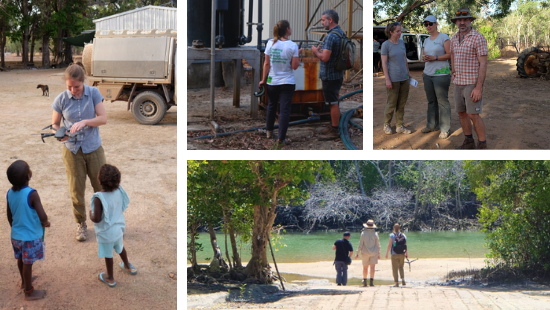From bathroom blitz to curriculum crowdsourcing – how EWB and CfAT have evolved a partnership to deliver successful outcomes for North Queensland Indigenous communities.
Twelve years ago, six volunteers and ten Kaiadilt fellas boarded two tinnies and a rescue boat to begin the three-hour crossing from Mornington to Bentinck Island. Bentinck, a remote island in the Gulf of Carpentaria, is home to a tiny community of Indigenous women elders, with visits from community members living on neighbouring islands. After two weeks of constant hard work, many laughs and several late-night fishing trips, the “bathroom blitz” was complete – the construction of an ablutions block made from disused building materials.
It was a project that brought together a range of expertise and heralded the very start of EWB’s partnership with the Centre for Appropriate Technology (CfAT). It is a partnership that is now over a decade strong. Over that time, it has changed and evolved, always with a core focus of how our partnership can best create positive impact and sustainable outcomes for Indigenous communities.
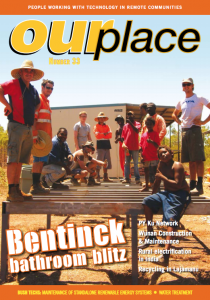
Front cover of CfAT magazine, June 2008
Reflecting on the Bentinck project at the time, CfAT’s Andre Grant noted that the CfAT and EWB collaboration demonstrated a partnership for development in situations where access to the necessary skills and expertise required would not have been available through conventional avenues:
“The dynamics and roles of each party, from the Kaiadilt Corporation to EWB, commercial engineering and construction firms, the two Brisbane universities and CfAT, are particularly important. Each played its part according to its expertise but also in supporting each other in a successful partnership model. From an educational point of view, it demonstrated that a University partnership can bring powerful real world, transformative learning experiences for students that are a highly valuable commodity for universities. And, finally, it demonstrated that with the right approach, intentions and goodwill, there are many things the community can achieve with the appropriate support from external organisations.”
Underground and on the land – a look back at two impactful projects
CfAT and EWB have continued to build on this partnership foundation, collaborating on several other community-based design and construction projects.
The Lama Lama people in Cape York had been struggling with water issues for nearly a decade, but needed detailed designs and cost estimates to source funding for new infrastructure.
“The Lama Lama people were in a classic catch-22 situation,” says Andre Grant. “They had limited resources to deal with an infrastructure situation, but needed design input up front to figure out a solution.”
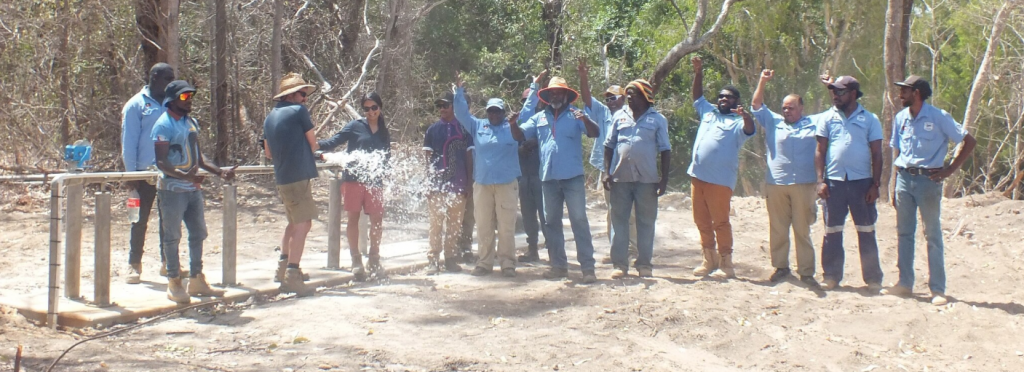
Lama Lama Port Stewart water supply
Andre and Gavin Bassani, Operations Manager, Yintingga Aboriginal Corporation (YAC) decided they were frustrated with people visiting the site and writing reports with no result. Through EWB’s pro bono program, engineering firm Arup agreed to provide specialist water engineering services and work with CfAT and the local community to design a robust, sustainable, fully costed long term solution.
In Shipton’s Flat near Cooktown in Far North Queensland, EWB worked alongside the Bana Yarralji Bubu (BYB) Corporation, CfAT and pro bono partners Aurecon and SKM, to design and deliver a ranger base. Volunteer tradespeople from Indigenous Community Volunteers (ICV), worked alongside a team of BYB Rangers to build an ablution block and ranger office, which included water and power supply. In 2011, EWB and CfAT won a Queensland Reconciliation Award for the unique community-corporate partnership model behind this project.
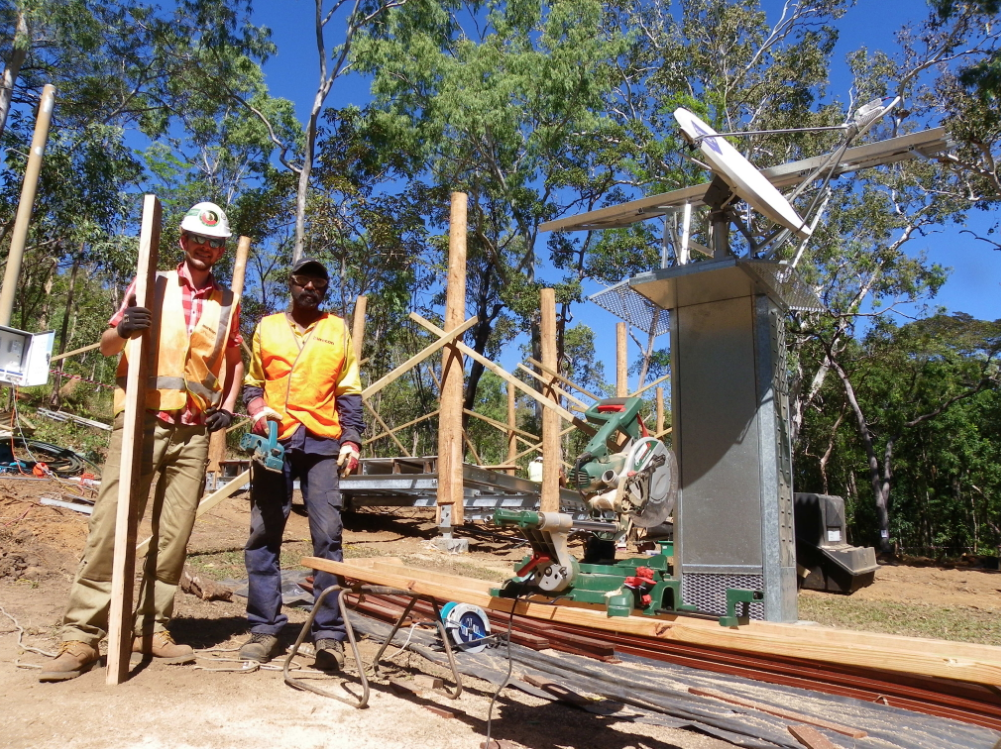
Work on site at Shipton’s Flat
It was a very symbolic project for BYB elders Aunty Marilyn and Uncle Peter Wallace, and gave them much hope and strength to meet their aspirations of returning to live on their Country. At the official open day, Aunty Marilyn shared her thoughts:
“Working together in partnership assisted us in reaching our aspirations. It empowered our rangers and Traditional Owners for their own future of moving back to Country. Everyone has skills, but it was the cross-cultural sharing that was most important that meant we could all learn together.”
Today, the site is a place for community healing, learning and land management where community members can come together, reconnect culturally and heal from the challenges faced by communities. The new facilities have enabled cross-cultural training initiatives and research group site visits. The Kuku Nyungkal rangers have also developed new walking paths and signage which shares the significance and stories of the land. It was also an opportunity for several members of the community to work on Country for the first time.
A broad remit to deliver appropriate, sustainable and manageable infrastructure and services
Today, EWB continues its work with CfAT to leverage the assets of both organisations to deliver appropriate, sustainable and manageable infrastructure and services to remote Aboriginal and Torres Strait Islander communities in Far North Queensland.
The partnership has a broad remit, that addresses the challenges these Indigenous communities have identified that need solutions so that they can live, work and thrive On Country, and protect their homelands. Our specific focus is on:
- Access to Energy – exploring and developing self-reliant models including community enterprise and impact investing;
- Appropriate Technology development – appropriating technology to make it more suitable for Indigenous communities for sustainable livelihoods on Country;
- Land-use planning – supporting Ranger programs and the Healthy Country Planning process with appropriate enabling infrastructure; and
- Specific community infrastructure support projects.
In 2019, the partnership took an exciting turn – to focus the 2020 EWB University Challenge in a Cape York context and CfAT’s decades of community engagement with Indigenous communities. The decision was a catalyst for determining a whole new range of ways for EWB and CfAT to work together.
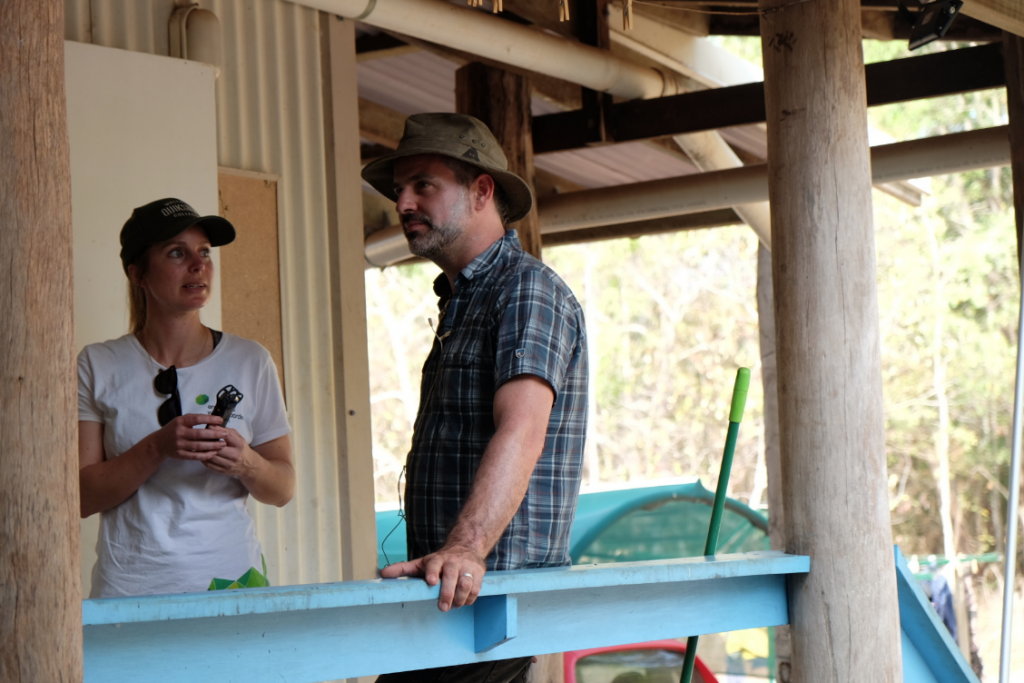
EWB’s Alison Stoakley and CfAT’s Andre Grant on a Cape York scoping trip – Nov 2019
Curriculum ‘crowdsourcing’ for research and solutions
In 2020, some 10,000 University students will complete their first-year unit focused on exploring innovative solutions appropriate to these communities, including road designs that reduce environmental impact, mobile showers and shelters for Indigenous rangers working in very remote areas, as well as solar bore pumps and greywater management.
Final year students are also involved in deeper dives, with seven research projects currently underway. These studies include reviewing the feasibility of different battery technologies for remote use, adapting water-tanks into building code-compliant cyclone proof dwellings, and refrigeration alternatives for use on homelands.
As important, a key component of the student learning journey involves understanding the Cape York context, embedding cultural awareness and Indigenous celebration into student course-work and learning how to design with Aboriginal communities and organisations.
At the end of this year, it means CfAT will be armed with a wealth of engineering innovation and research, to take back to communities in order to assess the viability and possible implementation.
Professional engineers collaborate to design place-appropriate technology
Beyond the student coursework, EWB has been working with CfAT on a range of technology development projects. These projects feed into EWB’s broader “Engineering On Country” program, with EWB staff working alongside technically-skilled volunteers who collaborate in teams, as well as staff from pro bono engineering firms engaged in specific projects.
The Portable Solar Power System is a project that was swiftly developed due to EWB staff’s existing expertise, with support mobilised through EWB’s skilled volunteers. It aims to increase access to energy for remote Indigenous communities where they need it, when they want it. Sustainable and reliable access to energy increases the ability to access important services on Country, which in turn will increase communities’ ability to spend time on Country.
The Vehicle Washdown Station is a model project of how our ‘mobilisation’ volunteer engagement program works – engaging engineers in real-time projects linked to our work with communities. Via an inaugural ‘Open Mobilisation Challenge’, teams from across the country created designs for the development of an off-grid, weed washdown facility. The unit aims to address the issue of weed control on remote Indigenous homelands – cited as a continual challenge to the preservation of biodiversity on Country.
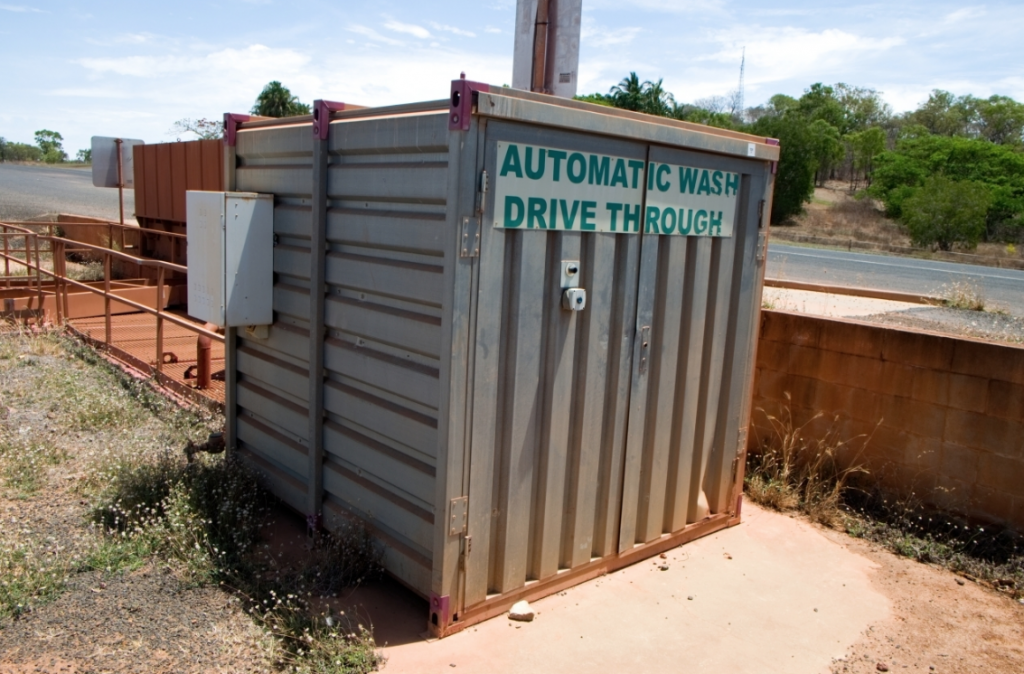
An existing washdown facility in Cape York. EWB is working on an off-grid vehicle washdown unit that is better suited for managing weed control in remote locations.
Arup has been a long-time pro bono partner for EWB’s Engineering On Country program, with a number of projects currently in development. EWB is also in discussions with corporate organisations for a range of projects (and is seeking more partners) that need pro bono support. Projects needed pro bono support include the development of remote airstrips, campsite tourism sites, ranger bases, on Country cultural centres, water treatment, rainforest housing design and sustainable modular housing.
Kim Axworthy, EWB’s EOC Program Manager, is excited by the opportunity for EWB to ‘double-down’ on EWB’s commitment to Engineering On Country:
“These projects link skilled professionals and EWB staff expertise to develop products and solutions to technical problems identified by EWB’s Aboriginal and Torres Strait Islander partner organisations. We are working together to create new knowledge and approaches in engineering innovation and technology.”


